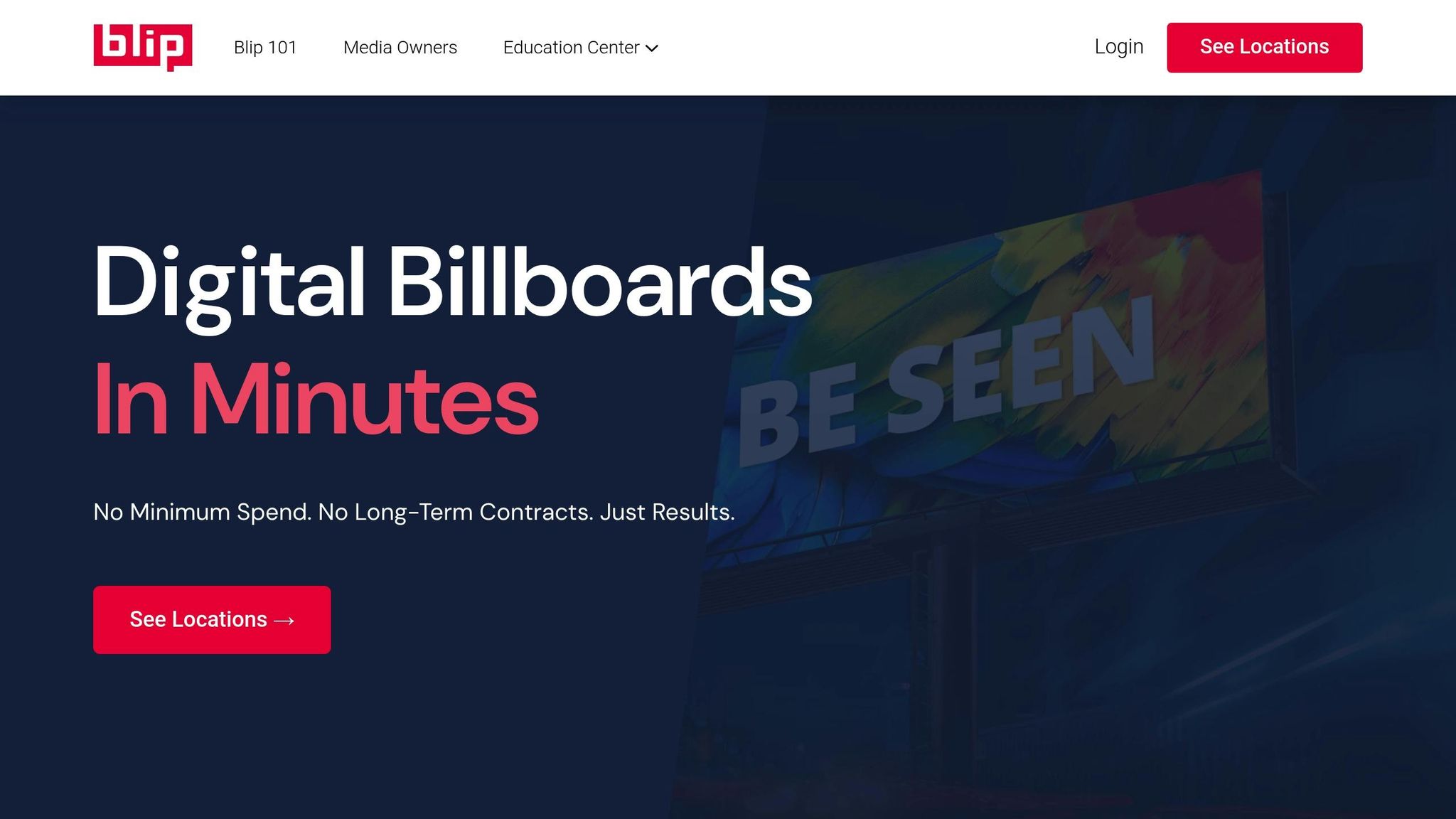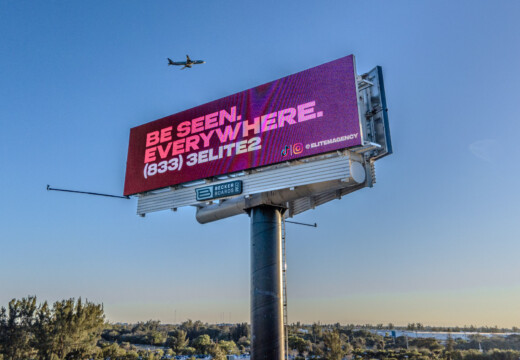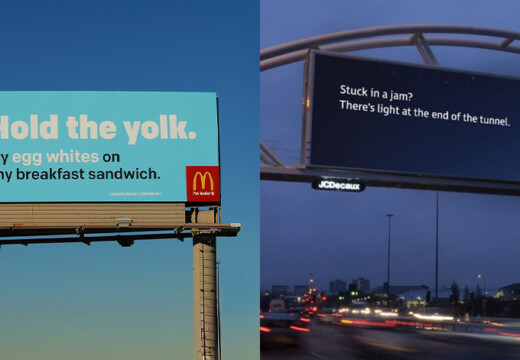Digital billboards make it easy for businesses to reach local audiences with precise, flexible, and affordable advertising. Here’s what you need to know:
- Cost-Effective: Start campaigns for as little as $20/day with no contracts.
- Location Targeting: Choose specific billboard locations to reach your audience where they live, work, or travel.
- Real-Time Control: Adjust ads based on time, events, or traffic patterns.
- Performance Tracking: Use analytics to measure impressions, costs, and campaign success.
With platforms like Blip, businesses can create bold, effective ads tailored to their communities while staying in control of budgets and schedules. Whether promoting a new location or boosting brand awareness, digital billboards offer a simple way to connect with your audience.
Local Targeting Basics
What Local Targeting Means
Local targeting focuses on showing ads in specific areas where your audience spends their time – whether that’s where they live, work, or travel. This approach lets you control when and where your ads appear, even down to the neighborhood level. Digital billboards, for example, display ads along busy roads and intersections, ensuring high visibility while leveraging the precision of digital tools. Now, let’s dive into why this strategy is so effective.
Why Local Targeting Works
Digital billboards create a direct connection between businesses and their local communities. Paul Willey, Owner of Mr. Charlie’s Chicken Fingers, shared:
"Working with Blip has given Mr. Charlie’s the momentum to get our new location on the map while accelerating growth for our original location".
This approach not only helps introduce new locations but also boosts growth for established ones.
Revolutionizing Digital Billboards Ad Targeting Based on …
5 Steps to Target Local Audiences
Here’s how you can effectively connect with local audiences using digital billboards.
1. Understand Your Market
Dive into local demographics and traffic patterns to identify where your audience spends their time – whether it’s at work, home, or popular shopping spots.
2. Choose Billboard Locations with Blip

Use Blip’s interactive map to pick billboard spots based on metrics like daily impressions and CPM. As Chris Leslie, Founder of Leslie Lightcraft Co, puts it:
"It’s big and bold and out there in public – the first step of looking big and public"
3. Create Ads with a Local Touch
Incorporate local landmarks, deals, or familiar phrases to make your ads resonate with the community.
4. Plan Your Schedule Wisely
Run your ads during high-traffic times, local events, or peak shopping hours. Blip lets you adjust display times and budgets on the fly.
5. Monitor and Optimize
Use Blip’s analytics dashboard to track daily impressions, CPM, and real-time bids. Continuously tweak your campaign for better performance.
sbb-itb-2e2e93f
Key Performance Metrics
Understanding Views and Costs
When it comes to digital billboards, two metrics matter most: impressions and cost per mille (CPM). Impressions estimate how many people view your ad daily, while CPM reflects the cost to reach 1,000 viewers. Blip’s marketplace makes it easy to see these numbers upfront so you can compare options and budget effectively. The next step is turning these metrics into measurable local outcomes.
Measuring Local Results
While impressions and CPM are important, the real impact is seen locally. Use tools like geo-fenced landing pages or unique local promo codes to track store visits. Monitor foot traffic before and after your campaign to understand its effectiveness.
Using Blip Analytics
Blip’s analytics dashboard provides in-depth tracking with updates every 10 minutes. You can break down performance by location or time block and even analyze specific billboard locations or times of day. These insights allow you to adjust your ad placements and schedule to maximize results, as outlined in Step 5.
Tips for Better Local Campaigns
Once your campaign is set up and metrics are in place, these strategies can help you boost local engagement.
Choose the Right Locations
Blip’s interactive marketplace makes it easier to identify key spots with heavy traffic and nearby points of interest. Prioritize major commuter routes during rush hours and areas close to your business or other relevant locations.
When deciding on locations, think about:
- Traffic patterns and demographics around your business
- Nearby businesses that complement yours
- Factors like lighting and how easily the billboard can be seen
Make It Relevant to the Area
Tailoring your ads to the local audience can make them more impactful and relatable.
Here’s how to make your ads resonate locally:
- Mention well-known landmarks or neighborhoods
- Highlight local events
- Offer promotions specific to the area
- Incorporate cultural elements familiar to the community
Keep Ads Simple and Bold
Digital billboards require designs that grab attention quickly and communicate effectively.
To create ads that stand out, focus on:
- Using large, easy-to-read text that’s visible from 500 feet away
- Keeping text short – 7 to 8 words max
- Including a single, clear call-to-action
- Using bold, high-contrast colors for better visibility
Conclusion
Digital billboards offer an effective way to run targeted local ads through Blip’s self-serve platform. This tool puts businesses in charge of their ad locations, schedules, and budgets.
By choosing the right locations, creating content tailored to your audience, and using real-time analytics, you can make the most of every advertising dollar. Campaigns start at just $20 per day, with no long-term contracts, allowing you to experiment, adjust, and improve as you go.
Follow the five steps outlined earlier to create a focused local campaign that engages your community and drives results.


